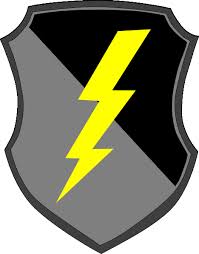Storm Wardens
The Chapels of Few can now be found throughout the Reaches, primarily in farming communities and those places that depend on the weather and sea for their livelihood. The Priests of Few are welcomed throughout the land as friends to the farmers - summoning rainstorms when needed or providing calm seas for fishing. While conflicts with the Order of Druids have arisen from time-to-time, the followers of Few are reticent to engage with their estranged brethren. Training for the Order takes place at the Lightning Citadel on the Long Lake. As a final rite, the aspirant must retrieve petrified lightning from the Sands of Time during the high storms of summer.
A small sect of Few's followers are called the Storm Wardens, and these clerics are highly sought by armies and adventurers alike. Eschewing the agrarian bent of their brothers, the Storm Wardens use their abilities to call down great storms and lightning upon their enemies. While still mindful of Few's guidance, these lightning priests are fully engaged in the politics and strategies of the Reaches. Armed with their characteristic shields of grey and black with a large lightning bolt, the Storm Wardens command respect and awe.
The Legend of Few
The seventh century TA was a time of a great migration to the Eastern Reaches. Great caravans moved east through the Merchant's Pass and down into the lush farming valleys south of Haggelthorn Forest. Villages and towns dotted the landscape and farms proliferated. One of those following the migration was the Druid Few. A humble man, brilliant and engaged with the people, Few was different than most druids who spent their time amongst the trees with little care for the people of the land. His time was spent moving from farm to farm, village to village, ensuring that the land was being used respectfully and farming was done to produce healthy, bounteous crops. By the late seventh century, the farms of the Eastern Reaches were finally becoming sustainable.
Few had always been fascinated by storms, and the great thunderstorms that rumbled through the Eastern Reaches from early spring to late fall were breathtaking. Great billowing, black clouds and bright yellow lightning were proceeded by rumbling thunder that shook the plains and sent all seeking shelter. All that is, except Few, who would often stand in the fields, leaning on his oaken staff, staring into the storm - as if trying to read its secrets. If the stories were to be believed, he had been struck hundreds of time by lightning in his lifetime. With a shock of now-white hair, the rumors could not be disputed. Few had watched the storms and learned - and now he could control the winds, weather and even the lightning.
In 689-691 TA, a great drought struck the Eastern Reaches. Farms teetered on collapse and animals died from a lack of grass. It seems that all the work of the previous decades would fail. Few went to the High Druid of his order to plead the case for Oakentree to provide relief for the farmers. His request was refused - nature's balance must be maintained - even if the humans died from starvation. It was in this council meeting that Few broke his oaken staff and left the Order.
In early 692 TA, Few began magical incantation of epic power - summoning a storm on the shores of Long Lake. Winds swirled, lightning flashed - and again Few was struck - many, many times. His followers fled. But Few stood fast, and soon the rains began to fall. The storm - some five hundred miles in diameter - dropped life-saving rain for the better part of several weeks. In the end, the drought in the Eastern Reaches was broken. The farms and peoples of the Eastern Reaches were saved. However, Few was gone - just a blackened rock was left from where he stood. Disowned by the Druids, Few was revered by the people. Small chapels to Few began to appear, and by the turn of the eighth century, the Lightning Citadel was built on the shores of Long Lake.
To this day, Few's name is invoked to harness the powers of nature, storms, sea or wind. It is said that those prayers are often answered by a small flash of lightning and the faint smell of ozone.
